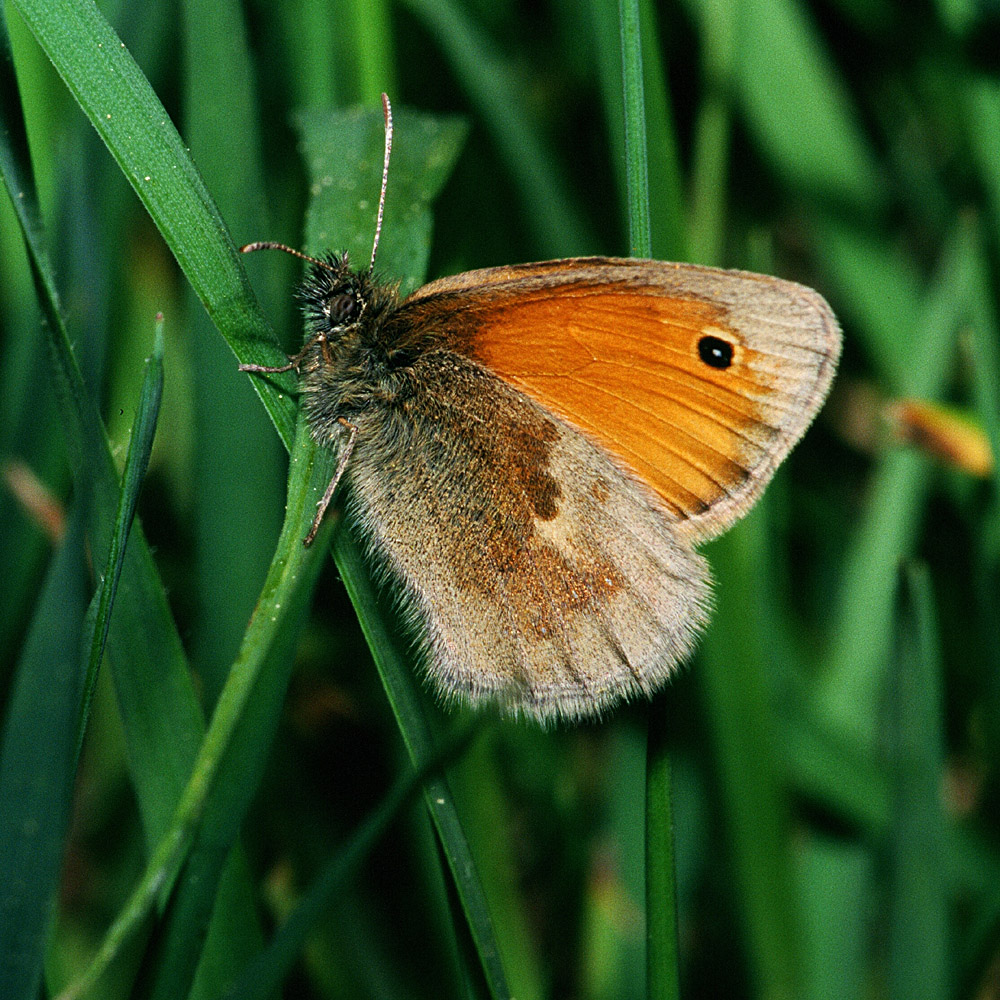Peter Martin writes:
With a wingspan of about one inch (25 mm) and rather dowdy colouring, you may find this butterfly rather difficult to spot. At Fleet Pond, it is more likely to be seen on the Dry Heath or along the footpath that borders it. Its wings are a very pale golden colour, with the exception of the hindwing undersides which are shades of both pale and dark grey. The forewings have small “eye” spots close to the tips. When settled they sit with their wings closed and may even tuck their forewings behind their hindwings, which helps them to blend in with their surroundings.
Green or yellow eggs are laid singly on meadow grass and fescues during June. After a fortnight, the green caterpillars emerge and normally feed on the grass tips at night. The best way to see them is to check grassy areas with a torch during the hours of darkness – a task only likely to be tackled by keen entomologists!
The caterpillars, while still fairly small, hibernate during the winter, although they may feed on very mild days. After resumption of normal feeding in the spring, they pupate by late April and emerge towards the end of May or early June. This brood flies until early July.
There is a second brood that results from over-wintering eggs that can be seen flying during August and September. I have normally seen only one or two Small Heath butterflies at Fleet Pond but, when leading a “guided walk” there in 2005, I was surprised to see a group of five flying around each other, making the most of the sunshine. They have a rather “drunken” pattern of flight, which may help you to identify them.
Male butterflies establish a territory by perching on the ground and waiting for a female to come along. If another male comes into the territory, they engage in prolonged aerial battles to claim possession. Generally, the larger-winged butterfly wins and the smaller flies off to establish another territory.
If you see a female flying back and forth over a fairly small area of ground, she may be trying to gain the interest of a perching male. Having attracted her mate, the female lands and the male advances with a series of head butts. After mating, the female avoids other male territories. When laying her eggs, the first hundred or so are green, but the later ones are yellow. We do not know why this change of colour takes place.
Visit the blog in July for information about the Small Tortoiseshell.
Peter Martin acted as author for a booklet entitled “Blackwater Valley Butterflies” which contains photographs of all 32 species found in this area together with information about their life cycles. Copies are available for £2.50 plus £1.00 p.p. from Blackwater Valley Countryside Partnership, Ash Lock Cottage, Government Road, Aldershot, Hants, GU11 2PS. (Cheques should be made payable to B.V.C.P.).
Picture credit here.

